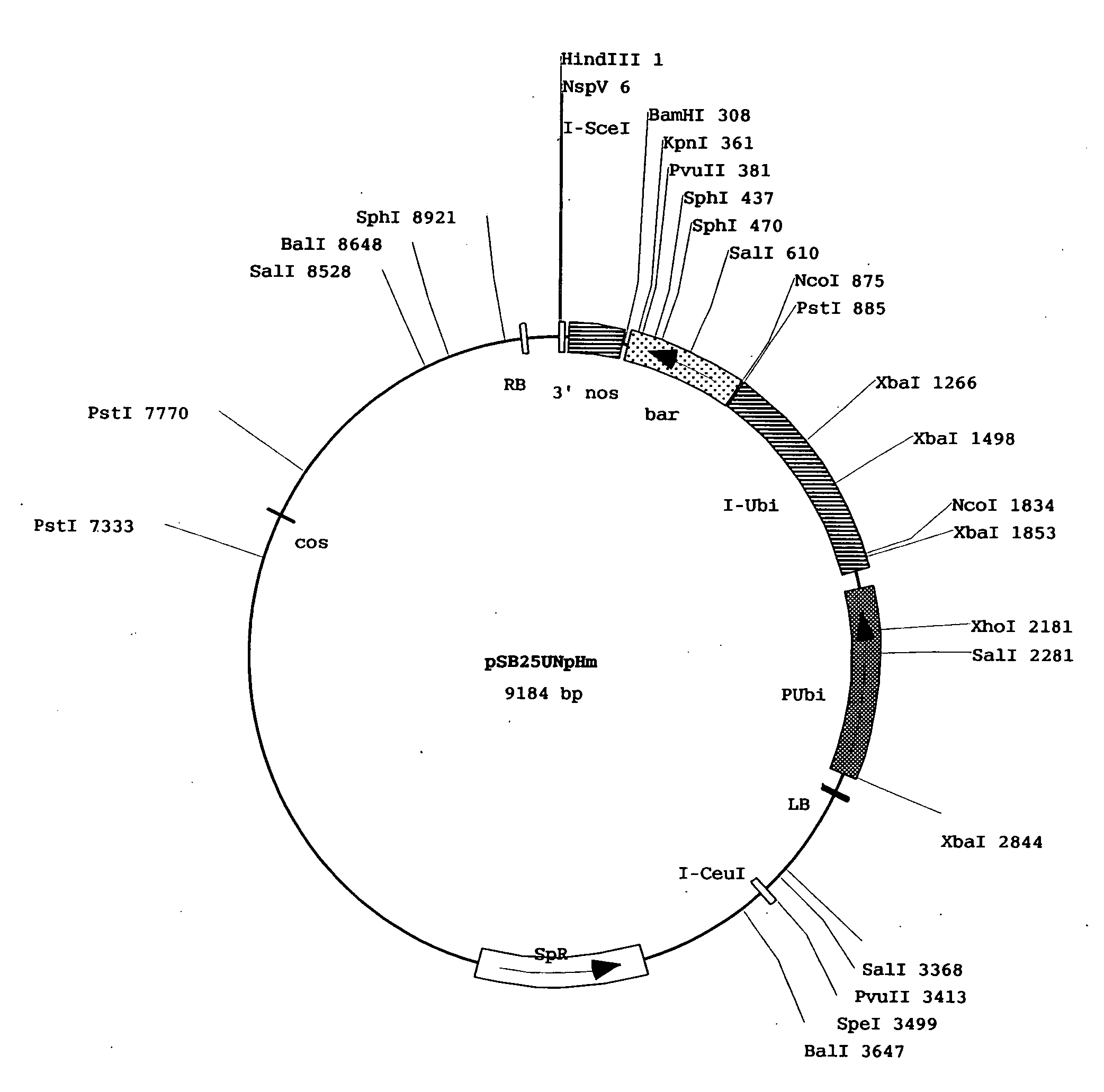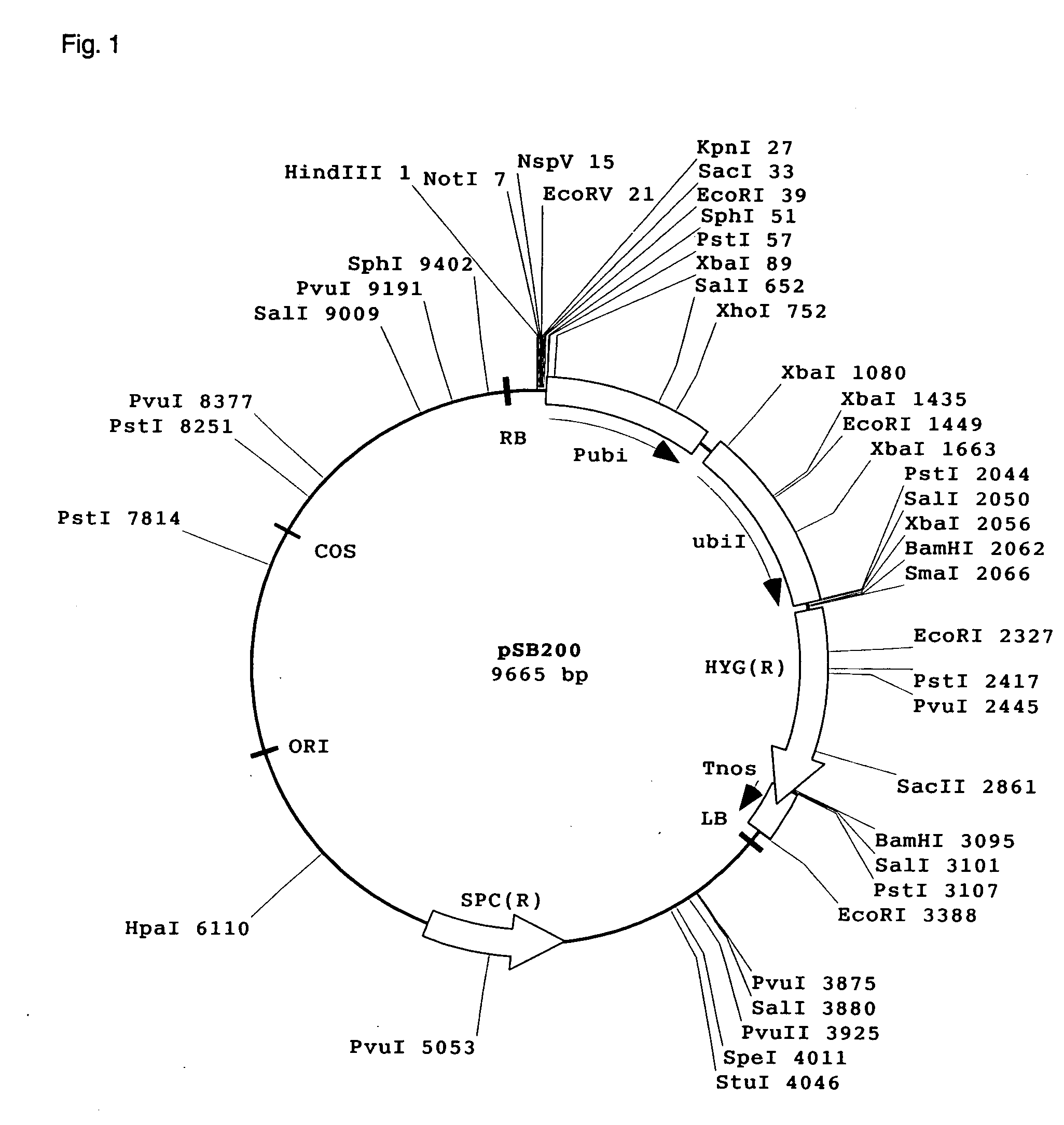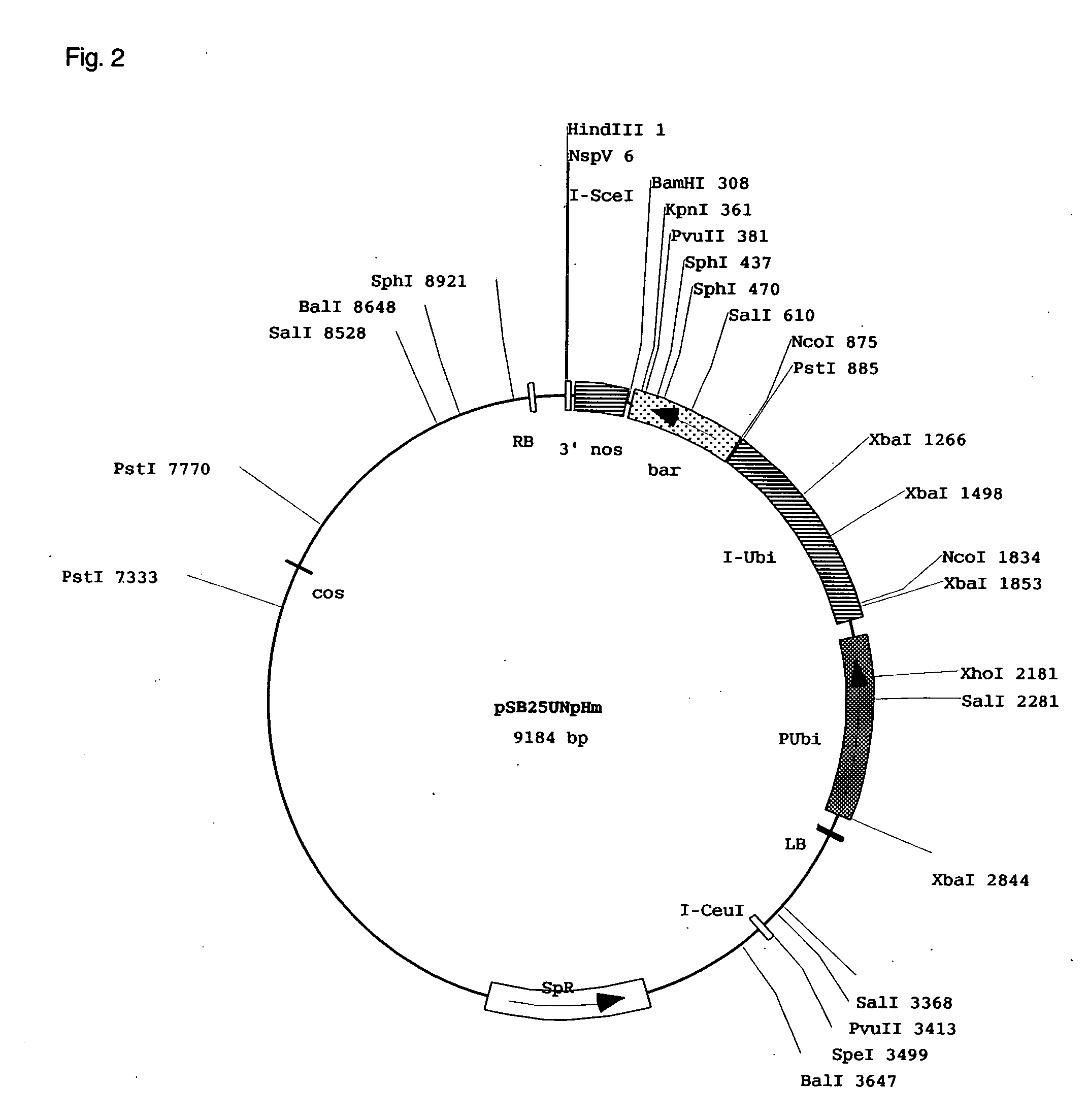Method for Screening Genomic Dna Fragments
- Summary
- Abstract
- Description
- Claims
- Application Information
AI Technical Summary
Benefits of technology
Problems solved by technology
Method used
Image
Examples
example 1
Extraction of Genomic DNA from Oryza rufipogon and Construction of Genomic DNA Library
[0119]Seeds of Oryza rufipogon, an allied species of rice, were obtained from National Institute of Agrobiological Sciences and planted for cultivation in a greenhouse. From leaves of the plants, genomic DNA was extracted in the usual manner. The extracted genomic DNA was subjected to partial restrictive degradation with restriction enzyme TaqI and, thereafter, fractions of 30 kb to 50 kb were prepared by sucrose density gradient centrifugation. Using those fractions, cloning was made at the site of cleavage in cosmid vector pSB200 by Nsp(7524)V (hereunder sometimes designated simply as NspV) to construct a genomic DNA library.
[0120]The vector pSB200 was a cloning vector constructed from the pSB11 described in Komari et al. (Plant J. 10:165-174, 1996). To be specific, a maize ubiquitin promoter was connected before a hygromycin resistance gene and the 3′ terminal signal of NOS gene. A Nsp(7524)V cl...
example 2
Transformation of Japonica Rice with the Clones Constituting the Oryza rufipogon Derived Genomic DNA Library
[0122]The clones constituting the genomic DNA library derived from Oryza rufipogon were individually transferred into the Agrobacterium strain LBA4404(pSB1) (Komari et al. 1996). The method used for transfer was triparental mating (Ditta et al. Proc Natl Acad. Sci. U.S.A. 77:7347-7351, 1980). The resulting Agrobacterium carrying the clones were individually introduced into rice (variety: Yukihikari). The method of transformation was in accordance with Hiei et al. (1994) and based on inoculation of immature embryos with Agrobacterium. The immature embryos of the variety Yukihikari were obtained from plants cultivated in a greenhouse after sowing grains of unpolished rice marketed for food, or from their progeny plants cultivated in the greenhouse.
[0123]As a result, transgenic plants were obtained into which a total of 5310 genomic DNA fragments from the Oryza rufipogon derived ...
example 3
Evaluation of Japonica Rice Transformed with the Genomic DNA Fragments from the Oryza rufipogon Derived Genomic DNA Library and Selection of Plants that Exhibited Phenotypic Variation
[0125]The transgenic plants were cultivated in a greenhouse and the respective individuals were investigated for the vigor of the plant taken as a whole, plant length, relative growth rate, number of panicles, shoot weight, panicle weight, panicle length, number of fertile grains, and yield. In the present specification, relative growth rate refers to the amount of daily growth per unit plant length and is determined by the formula: ((plant length at the day the investigation was completed minus plant length at the day the investigation was started) / the period of investigation in days) / plant length at the day the investigation was started. After the investigation, the plants that were found to have exhibited a phenotypic variation in any trait as compared with the control plant were selected. Tables 1 t...
PUM
| Property | Measurement | Unit |
|---|---|---|
| Digital information | aaaaa | aaaaa |
| Weight | aaaaa | aaaaa |
| Electrical resistance | aaaaa | aaaaa |
Abstract
Description
Claims
Application Information
 Login to View More
Login to View More - R&D
- Intellectual Property
- Life Sciences
- Materials
- Tech Scout
- Unparalleled Data Quality
- Higher Quality Content
- 60% Fewer Hallucinations
Browse by: Latest US Patents, China's latest patents, Technical Efficacy Thesaurus, Application Domain, Technology Topic, Popular Technical Reports.
© 2025 PatSnap. All rights reserved.Legal|Privacy policy|Modern Slavery Act Transparency Statement|Sitemap|About US| Contact US: help@patsnap.com



